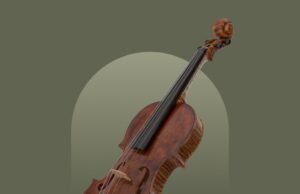John Dilworth
ACTON, William John Born 1848 Woolwich, d. after 1900 Forest Gate, London UK. Active from 1868. Moved to 472 Katherine Road, Forest Gate, London in 1898. Stainer, Stradivari and personal models, 210 violins, 19 violas, 29 cellos and 21 double basses completed up to 1904. Amber oil varnish of his own make, in various colours. Imported tone woods of good quality. Also over 250 bows, of fine pernambuco. Printed label: William J. Acton, / Maker / St.Mary Street, Woolwich, 188. Manuscript label: William John Acton / Maker / Forest Gate London 1898 [Meredith Morris]
Willibald Leo Lütgendorff
Sohn und Schüler A. W. A. Er begann seine Laufbahn mit einer Copie nach Stainer und hat seither über 110 Violinen, 12 Violen, 20 Violoncelli und 10 Contrabässe gebaut. Er verarbeitet vorzügliches Tonholz und bereitet sich seinen Bernstein-ÖÖllack selbst. Im Jahre 1898 verlegte er seine Werkstatt nach London. Sein Modell ist dem des Stradivari ähnlich, der Ton seiner Geigen ist edel und voll. Er gilt auch als geschickter Bogenmacher und ist äusserst sorgfältig als Wiederhersteller. Er beschäftigt keine Gehilfen und macht daher alles selbst, auch ist er ein tüchtiger Geiger. Meredith Morris veröffentlicht in »The Strad« Jan. 1900 seine Biographie mit Bildniss etc.
William Meredith Morris
He works at Gipsey Lane, Forest Gate, E. He was born in St. Mary Street, Woolwich, on December 12, 1848, and is the only son of his father, A. W. Acton. He was educated at Rectory Place Academy. He was trained by his father, and carried on business at Woolwich till 1898, when he removed to his present address. He made his first instrument in 1868, and up to date he has completed no violins, 12 violas, 19 violon- cellos, and 10 double basses. He also makes bows. His wood is good, rather plain, but well chosen for acoustical qualities. His varnish is an amber oil one, of his own make. Colours : amber, ruby, and brown.
His model is original, approximating to that of Stradivari.
The measurements are : —
Length of body …. 14 Inches. Width of upper bouts …. 6 7/16ins,Width of lower bouts …. 8 1/16ins, Width of inner bouts . . . . 4 3/8ins, Length of inner bouts from corner to corner … 3 1/10 ins,Length of sound-holes . . . . 2 3/4ins,Width between sound-holes at top . . 1 3/5ins,Width between sound-holes at bottom … 5 ins,Height of sides at lower bouts . . . 1 1/4ins,Height of sides at upper bouts… 1 3/16ins,Height of arching … 9/16ins
The ff holes are original, and are quite in keeping with the contour of the instrument. The scroll is very good, and shows much force of character. The purfling tool is handled almost without a tremor, and the purfle is inlaid with taste. The infinitesimal chips and gaps so often observable in the purfle of some makers is conspicuous by its entire absence. Of course, this is a very small matter, and it in no way affects the acoustic qualities of the instrument, but it is well that it is not ignored at the same time.
The tone of the instruments which I have seen by this maker was powerful and penetrating. One instrument I examined had a particularly fine G string. The tone has nothing of the Amati sweetness about it, and nothing of the bell-like clearness of Stradivari, but it is a good tone, nevertheless, and ought to develop further good qualities.
He sells his instruments at prices ranging from £6 for the violins up to £35 for the double basses. His bows are strong and well-balanced, but not highly artistic.
